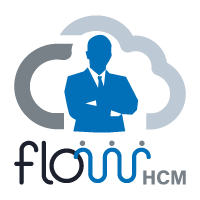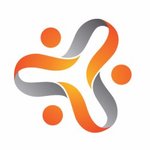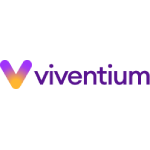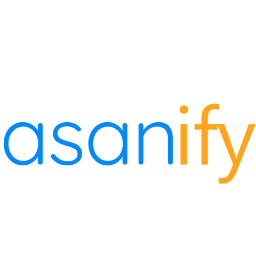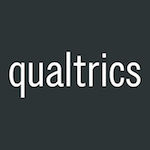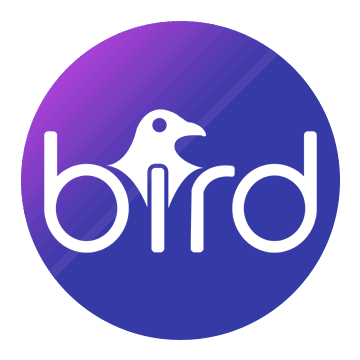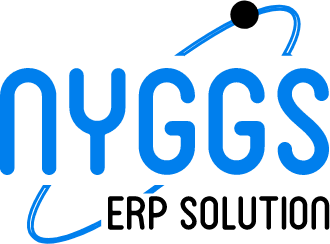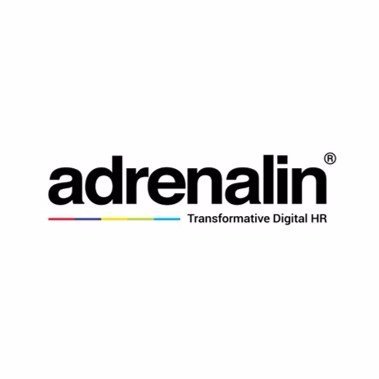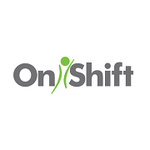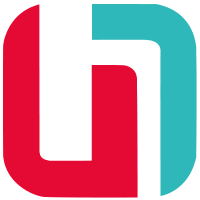What Are The Recent Trends In HR Analytics Tools?
HR Analytics has emerged as a crucial tool in today's corporate environment, providing firms with useful insights about their workforce and assisting them in making data-driven decisions. As the demand for precise and effective HR analytics has increased, so have the tools available to satisfy it.
Buyers of HR analytics software should be aware of the following current trends:
1. Shift To Cloud-Based Solutions: As more firms employ remote workforces and demand real-time data, HR analytics tools are rapidly moving towards cloud-based solutions. These platforms provide quick access to data and analytics from anywhere and at any time, allowing HR professionals to make more informed decisions.
2. Integration With Other HR Systems: In order to be truly effective, HR analytics solutions are increasingly being designed to interact with other HR systems, such as performance management and engagement platforms. This integration enables a more comprehensive and holistic perspective of an organization's workforce, resulting in a deeper comprehension of the data and improved insights.
3. Emphasis On Predictive Analytics: While previous HR analytics solutions focused on historical data, new trends indicate a shift toward predictive analytics. These solutions utilize algorithms and machine learning to examine historical data and forecast future outcomes, allowing HR managers to address possible concerns and make more strategic decisions.
4. AI Integration: Artificial intelligence (AI) is being implemented into HR analytics solutions to automate data analysis and give more accurate and timely insights. AI-powered solutions can also assist in spotting patterns and trends in massive amounts of data, making it much easier for HR professionals to make data-driven decisions.
5. Customization Options: Buyers can now design HR analytics tools to meet their individual demands and requirements. This includes deciding which indicators to track, designing bespoke dashboards, and determining which data visualizations are most relevant to their business.
6. Mobile-Friendly Interfaces: In today's digital age, HR analytics systems must include a mobile-friendly interface. This enables HR professionals to access data and analytics on the road, allowing them to make faster decisions and be informed at all times.
Benefits Of Using HR Analytics Tools
HR analytics technologies, often known as people analytics software, are becoming popular in businesses of all sizes and industries. These sophisticated technologies use data and analytics to provide useful insights into a company's workforce, allowing HR professionals to make more informed decisions on human resources.
Here are the benefits of adopting HR analytics solutions and how they can help you improve your HR procedures.
1. Improve The Recruitment And Hiring Processes: One of the primary advantages of employing HR analytics solutions is their ability to streamline and optimize the recruitment and hiring processes. These technologies can analyze job applicant data, such as resumes, qualifications, and previous experience, to determine the best applicants for a given position. This saves HR professionals time and effort while also increasing the likelihood of a successful hire.
2. Identify And Address Employee Turnover: High employee turnover can have a major influence on a company's financial performance. HR analytics solutions can help firms anticipate future departure rates and detect patterns in employee attrition. This enables HR professionals to address underlying issues and adopt measures to increase employee retention.
3. Make Data-Driven Decisions: HR decisions are no longer made based on intuition or gut feelings. HR workers can use analytics tools to make data-driven decisions based on real-time data and insights. This not only allows for more effective and efficient decision-making, but it also guarantees that HR practices are in line with company objectives.
4. Increase Employee Engagement And Productivity: HR analytics technologies can also reveal vital information about employee engagement and productivity. Organizations may increase employee engagement and productivity by examining data on satisfaction, performance, and work patterns. This can lead to a more engaged and productive workforce, which improves overall corporate success.
5. Monitor And Measure HR Metrics: HR analytics solutions provide a wide range of metrics and reports that enable firms to manage and measure key HR indicators such as absenteeism, training and development, and diversity and inclusion. These insights can assist HR professionals discover areas for development and track the effectiveness of HR initiatives and strategies.
Important Factors To Consider While Purchasing HR Analytics Tools?
As the demand for data-driven decision making in the HR market grows, HR analytics technologies become increasingly important. These tools enable HR professionals to evaluate massive amounts of employee data and derive useful insights to guide their strategies and actions. However, with so many HR analytics solutions on the market, it can be difficult for customers to identify the best one for their firm.
To simplify the purchasing process, here are some crucial criteria to consider when picking HR analytics tools:
1. Data Integration: The most important thing to consider when selecting HR analytics solutions is the capacity to integrate data from numerous sources. This comprises personnel information from several HR systems, such as performance management, recruitment, and payroll. It is critical that the tool can handle several data types and combine information seamlessly.
2. Purpose: Each organization's aims and objectives are unique, as are its HR analytics requirements. As a result, it is critical to establish and specify the goal of purchasing HR analytics tools. Employee engagement, diversity and inclusion, and workforce planning are some of the most prominent applications for HR analytics. Understanding the purpose will help you select a tool that meets your individual requirements.
3. capabilities And Functionality: Before making a purchase, carefully consider the HR analytics tool's capabilities and functionalities. Consider features such as data visualization, predictive analytics, and configurable dashboards. Consider the tool's complexity and whether it takes specialist expertise to use and comprehend the data.
4. Scalability And Flexibility: An organization's human resource requirements change as it develops and advances. Thus, when selecting HR analytics tools, it is critical to examine their scalability and versatility. The platform should be capable of effortlessly managing an increasing number of personnel and data sources. It should also be able to adapt to changes in the organization's human resources processes and policies.
5. User-Friendliness: User-friendliness is an important factor to consider, particularly for non-tech people. The HR analytics solution should have an intuitive design and be simple to use. It should also have thorough user guides and customer support to help consumers understand and use the technology efficiently.
6. Data Security And Compliance: Given the increasing sensitivity of employee data, it is critical that the HR analytics solution follows data security and compliance guidelines. Look for features that enable safe data transfer and storage, and ensure that the tool complies with applicable data protection rules.
What Are The Key Features To Look For In HR Analytics Tools?
When picking an HR analytics platform for your firm, there are a few crucial features to consider. These characteristics will not only help you make an informed decision, but will also guarantee that the tool fulfills your specific demands and expectations.
The following are the main features to look for in HR analytics solutions.
1. Data Integration And Management Capabilities: A decent HR analytics solution should be able to seamlessly interact with your existing HR systems and databases, allowing you to access and analyze all HR-related data from a single location. This allows you to get a complete picture of your staff and make data-driven decisions.
2. Customizable Dashboards And Reports: Look for a tool that allows you to view and analyze data in the format that is most relevant to your organization. You may also design reports and dashboards that are targeted to certain roles and departments, making data easier to access and comprehend.
3. Advanced Analytics: Select an HR analytics platform that has advanced analytics features like predictive analytics and machine learning algorithms. These capabilities can help you detect patterns and trends in your workforce data, allowing you to generate more accurate projections and forecast future trends.
4. User-Friendly Interface: Ensure that the tool's interface is simple and easy to explore and understand. This will allow you and your team to quickly become familiar with the tool and make the most of its features.
5. Security And Privacy: Because sensitive HR data is kept and accessed through the tool, it is critical that it has strong security measures in place. Data encryption, role-based access control, and regular backups are all features that can help safeguard your data from potential dangers.
6. Scalability: As your company expands and your HR data grows, you need a platform that can handle the volume and simply scale up. Consider future development plans and select a product that can adapt to your shifting needs.
7. Customer Support: Finally, it is critical to select an HR analytics product that provides consistent and fast customer assistance. Look for options like live chat, email help, and phone support, and make sure the provider responds quickly and effectively when needed.
Why Do Businesses Need HR Analytics Tools?
HR analytics tools are critical for organizations of all sizes and industries. These solutions provide detailed insights and data analysis, which can alter how businesses manage their human resources. HR analytics solutions provide important information and assist firms in making data-driven workforce choices, including hiring and training, performance management, and employee engagement.
Here are some major reasons why firms want HR analytics tools:
1. Identify Trends And Patterns: Human resource analytics solutions assist firms in identifying trends and patterns within their workforce. Employers can utilize data to determine which departments or teams are the most effective and which ones should be improved. These insights enable focused interventions and real-time data-driven decision making.
2. Improve Recruiting And Retention: In today's competitive labor market, attracting and maintaining top talent is essential. HR analytics solutions may evaluate and track data on employee performance, happiness, and turnover rates, allowing firms to develop more effective hiring strategies and enhance retention.
3. Increase Employee Engagement: Engaged employees are more likely to be productive and stay with their organization for a long time. HR analytics solutions can assess employee engagement and highlight areas for development. Businesses can develop techniques to increase engagement over time, ultimately improving productivity, morale, and retention.
4. Forecast Future Needs: HR analytics solutions can forecast future worker requirements based on existing data and trends. This enables firms to make educated decisions regarding hiring, training, and succession planning, resulting in a stable and prepared staff.
5. Cut Costs: By using HR analytics tools, organizations can identify regions with high turnover, absenteeism, and low productivity, which can be costly to the company. With this information, organizations may develop plans to address these challenges and, eventually, save costs.
6. Ensure Compliance: HR analytics solutions can also assist organizations in complying with labor laws and regulations. These systems may collect and analyze data on benefits, remuneration, and employee demographics, ensuring that firms adhere to regulatory standards and prevent potential legal complications.
Which Industries Can Benefit The Most From HR Analytics Tools?
HR analytics tools have transformed how companies manage their people resources. These solutions use data to deliver vital insights and help firms make educated personnel decisions. From recognizing top performers to predicting staff attrition, HR analytics solutions have become essential for businesses seeking to remain competitive in an ever-changing corporate context. While HR analytics technologies can aid every industry, some have a greater advantage.
Let's explore, which industries can profit the most from using these technologies.
1. Technology: The technology industry is known for its fast-paced, dynamic environment, and HR analytics solutions can help to support the sector's quick growth and transformation. These technologies can assist IT organizations in identifying skill shortages, forecasting talent requirements, and developing a pipeline of future leaders.
2. Healthcare: In the healthcare industry, where trained and qualified workers are in high demand, HR analytics solutions can make a significant difference. Employee data analysis can help healthcare firms uncover patterns that lead to burnout and turnover. This information can be used to develop strategies for increasing employee happiness and retention.
3. Retail: The retail business, with its big and diverse workforce, can considerably benefit from HR analytics solutions. These tools can assist shops in optimizing their workforce levels, identifying trends in employee productivity, and determining essential areas for employee training and development.
4. Financial: In the highly regulated financial industry, HR analytics tools can assist businesses assure compliance and reduce risks. Financial firms can reduce the likelihood of costly legal implications by examining employee data for potential areas of fraud and unethical behavior.
5. Manufacturing: In the manufacturing industry, personnel management is crucial, and HR analytics solutions may provide actionable insights to boost efficiency and production. Manufacturing organizations can develop and execute targeted solutions by examining data on employee performance and attendance.
Conclusion
After thoroughly examining and comparing numerous HR analytics tools, it is safe to conclude that these technologies have become indispensable for firms of all sizes. They provide useful insights and data-driven decisions that can significantly improve human resource initiatives, employee engagement, and overall corporate performance. When looking for the best HR analytics solution for your firm, you must examine your specific requirements, budget, and desired features.
Data integration capabilities, customisation possibilities, usability, and client support are all important considerations. Before making a final selection, take advantage of the free trials and demos provided by various vendors to gain firsthand experience with the tool's capabilities and interoperability with your existing HR systems. Finally, investing in a dependable HR analytics platform can result in improved labor management, cost savings, and enhanced employee satisfaction.
Take your time researching and evaluating choices to locate the best tool to match your specific business needs and assist you reach your HR objectives. With the proper HR analytics platform, you can make educated decisions that propel your organization forward.




